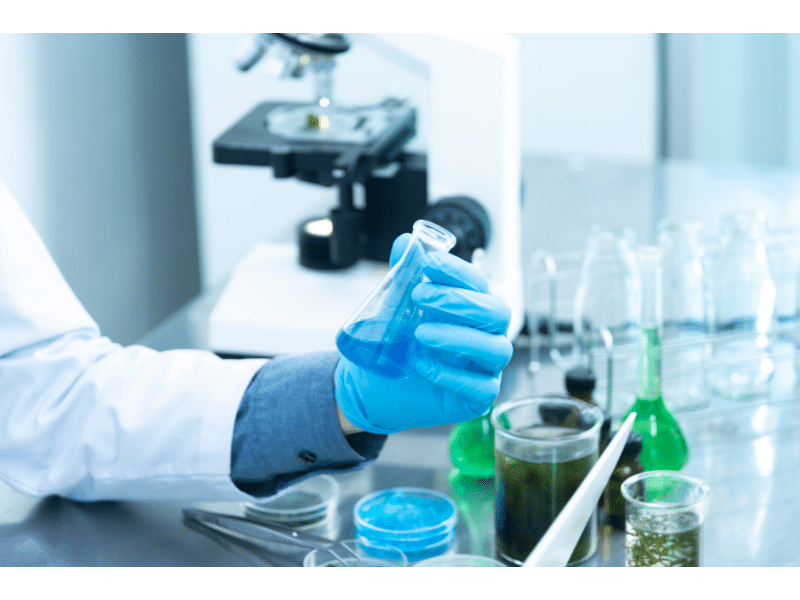Title image source: VicktorCap from Getty Images via Canva.com
Providing the required environmental conditions for lab experiments always takes priority over energy savings in laboratory buildings. This can create extra challenges for retrofit projects designed to improve sustainability. But with experience and perseverance, you can navigate through almost anything to achieve your energy and performance targets.
Over our years working on whole-building controls retrofit projects, we’ve learned some useful lessons for overcoming challenges in lab buildings. One lesson is to be ready to learn a lot of new things about the building once the new DDC controls are in place and you can see what’s actually happening in the zones. Another is to be adaptable in the face of that new information, and to be ready to work through (or around) issues that arise, without losing sight of the project goals.
I’d like to share a story from a recent project we completed at Stanford University as part of their Sustainable Stanford efforts. The project took place in a mixed-use lab and office building. kW performed an energy audit, prepared bid documents for the controls upgrade from pneumatic to DDC, and acted as Stanford’s commissioning agent during implementation.
Source of Energy Savings
Proposed energy-saving strategies included:
- Occupancy scheduling for some spaces,
- CAV to VAV conversions, and
- Demand-based resets for the air handlers and exhaust systems.
Determining Occupant Priorities
Stanford polled the occupants and established that for most of the lab spaces, a temperature deadband of ±1°F was acceptable. The most temperature-sensitive space was a laser lab in the basement, which was equipped with its own cooling-only fan coil unit for local temperature control in addition to supply air from the AHU.
Initial Performance
When the controls retrofit was almost complete, the team enabled the demand-based AHU supply air temperature reset. A couple of weeks later we received an email complaint from the laser lab researcher, saying that the temperature in his space was now swinging unacceptably. The primary purpose of any lab building is to provide the optimum environment for the occupants’ research, and so the team discussed whether we should disable and abandon the energy-saving SAT reset. But we didn’t want to give up on those energy savings so quickly, so we asked the project team for some time to try to solve the root problem in the laser lab before making a final decision on the SAT reset.
Investigating Unacceptable Conditions
First, we scheduled a meeting with the researcher to better understand his needs and experience with the space. He confirmed that the recent unstable temperatures had started around the same time as the SAT reset was turned on, but also mentioned that the relative temperature stability he’d lost had been a recent phenomenon too: the space had experienced problematic temperature swings since his arrival at Stanford years ago. So this wasn’t just a new problem caused by the SAT reset. He also told us that his experiments require ±0.1°F temperature stability in the space.
Next, we looked at the trends from the new DDC system (via SkySpark), and we discovered a few key things:
- We noticed that the space was often at 100% cooling load and was not meeting its cooling temperature setpoint, which explained why we were seeing fluctuations that exceeded the ±1°F initial deadband that had been set by the contractor.
- We found that someone had overridden the AHU SAT setpoint to 55°F (from its usual value of 62°F) in the month prior to enabling the SAT reset. That extra cooling capacity explained the unusual temperature stability the researcher had also experienced.
- We saw that even at 100% cooling demand, the fan coil unit was only cooling the air by 4°F.
Problem Solving to Save Energy Savings
Our first corrective action was to ask Stanford’s maintenance team to flush the FCU cooling coil, which restored its ability to cool the air by 20°F. That allowed the space to meet its cooling setpoint. We then tightened the space temperature deadband from ±1°F to ±0.1°F, and saw another tightening in space temperature control, down to ±0.2°F. But that still didn’t meet the researcher’s requirements.
We observed that the fan coil unit was relatively far from the laser table, house supply air diffusers, and room temperature sensor, meaning that it couldn’t respond quickly to changes in the supply air temperature from the AHU, and so small temperature swings remained. Physically reconfiguring the space would be disruptive and would incur a cost, so we looked for another solution.
Working with one of Stanford’s excellent controls engineers, we developed some new control logic to keep the space more precisely at its cooling temperature setpoint: we controlled the reheat coil to maintain the coil discharge air temperature at 65°F at all times, the maximum value of the AHU supply air temperature reset. That actively isolated the room from the greatest source of temperature fluctuations, the varying SAT from the AHU. It also nudged the space into cooling mode, so the FCU cooling coil then stayed slightly open to keep the space at setpoint. And with the new SOO in place, we saw the space temperature variations fall to within the allowable ±0.1°F range, and that stability has now been maintained for almost 6 months. For the small cost of a little simultaneous heating and cooling in one space, the laser lab gets what it needs (and hadn’t gotten in years), and we get to save energy in the rest of the building by keeping the AHU SAT reset in place.
Persistence Paid Off with Performance and Energy Savings
Throughout the process, we worked with the researcher to keep him informed about the changes we were making and their expected effects. He appreciated being involved and in turn kept us in the loop about the times when he was turning on or moving equipment so we’d know why there were blips in our SkySpark trends. He confirmed the new temperature stability using his own sensors embedded within the laser table setup, and now keeps us in the loop about the new experimental results he’s achieved in his optimized space.



